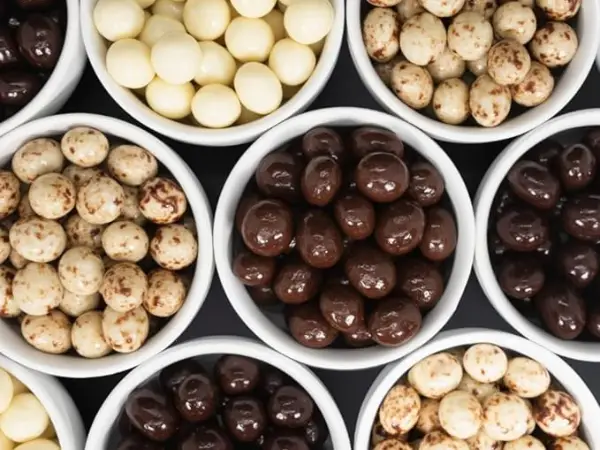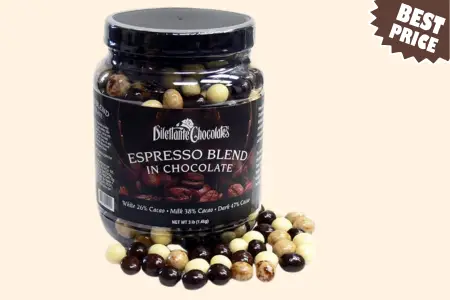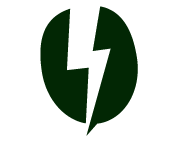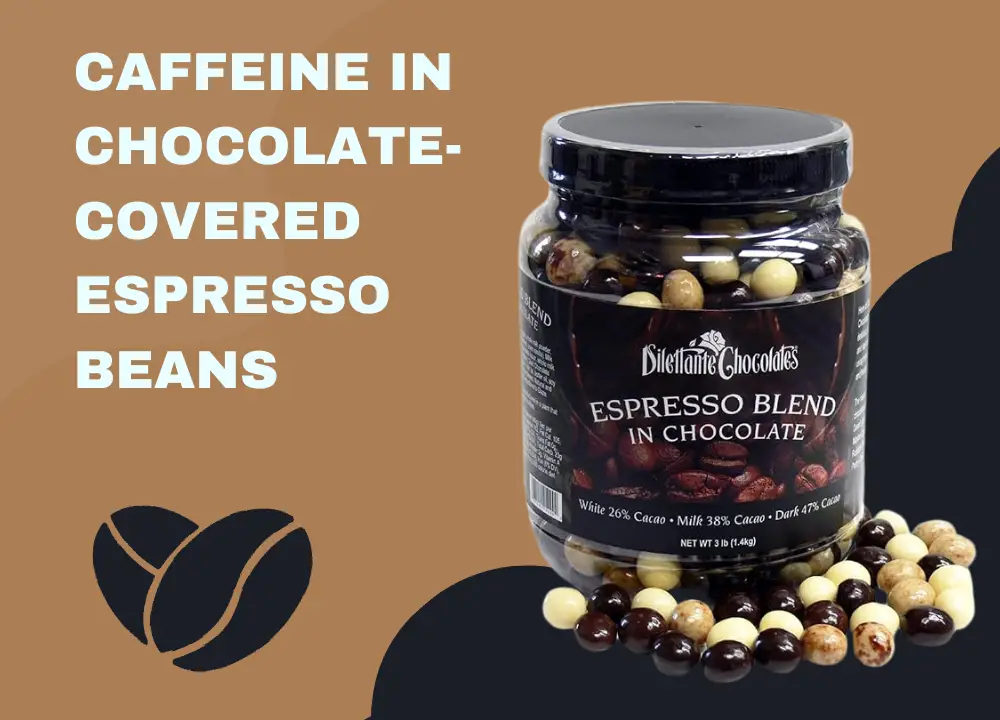Each bean can have a surprising amount of caffeine, depending on the brand and how they are made. In this guide, we will explore the caffeine content in chocolate-covered espresso beans and what that means for your daily intake.
Table of Contents
Understanding Caffeine In Espresso Beans
Caffeine is a natural stimulant that affects how we feel and act. Knowing the caffeine content in these beans is important for those who want to manage their intake.
How Much Caffeine Is In A Single Espresso Bean?
Each espresso bean typically contains 5–10 mg of caffeine. This amount can vary based on several factors, including the type of bean and how it is roasted. Here’s a quick overview:
- Robusta beans: Higher caffeine content, around 10 mg.
- Arabica beans: Lower caffeine content, about 5 mg.
- Roasting method: Darker roasts may lose some caffeine.
Here’s a simple table for more clarity:
| Type of Bean | Caffeine Content (mg) |
|---|---|
| Robusta | 10 |
| Arabica | 5 |
Chocolate-covered espresso beans combine the caffeine from the espresso with the sugar from the chocolate. This combination can give you a quick energy boost. Enjoying just a few can help you stay alert. But be careful! Too many can lead to jitters.
Factors That Affect Caffeine Content In Coffee Beans
Many factors influence the caffeine content in coffee beans. Understanding these can help you choose the right beans for your needs. Here are some key factors:
- Bean type: Different types have different caffeine levels.
- Growing conditions: Climate and soil can impact caffeine production.
- Processing method: How beans are dried and processed matters.
- Roasting time: Longer roasting can reduce caffeine content.
Here’s a quick breakdown of how these factors affect caffeine:
| Factor | Impact on Caffeine |
|---|---|
| Bean Type | Robusta has more caffeine than Arabica. |
| Growing Conditions | Better conditions can lead to higher caffeine. |
| Processing Method | Wet processing may preserve more caffeine. |
| Roasting Time | Longer roasting may lower caffeine levels. |
When choosing chocolate-covered espresso beans, consider these factors. They can help you find the right balance of flavor and caffeine for your needs.

The Role Of Chocolate In Caffeine Content
Different types of chocolate contain different amounts of caffeine. This knowledge helps you enjoy your chocolate-covered espresso beans while being mindful of your caffeine intake.
Dark Chocolate Vs. Milk Chocolate: Which Has More Caffeine?
Dark chocolate and milk chocolate differ significantly in caffeine content. Dark chocolate is known for its rich flavor and higher caffeine levels. It contains about 12–15 mg of caffeine per gram. This makes dark chocolate a favorite for those looking to boost their energy levels.
In contrast, milk chocolate has a creamier taste and less caffeine. It contains only 5–6 mg of caffeine per gram. This lower caffeine content comes from the additional milk solids and sugar in milk chocolate.
| Type of Chocolate | Caffeine per Gram |
|---|---|
| Dark Chocolate | 12–15 mg |
| Milk Chocolate | 5–6 mg |
If you want a stronger kick, dark chocolate is the better choice. For a milder option, milk chocolate works well.
Does The Thickness Of The Coating Matter?
The thickness of the chocolate coating on espresso beans affects caffeine content. A thicker layer of chocolate means more chocolate and, therefore, more caffeine. The type of chocolate used also plays a role. For example, a thick layer of dark chocolate can significantly increase the caffeine count compared to a thin layer.
Consider these points:
- A thicker coating adds more grams of chocolate.
- More grams mean more caffeine.
- Dark chocolate’s higher caffeine content amplifies this effect.
For instance, if you have a chocolate-covered espresso bean with a thick dark chocolate coating, you could be consuming a considerable amount of caffeine.
Total Caffeine Content In Chocolate-covered Espresso Beans
Understanding the total caffeine content in these tasty treats is important for anyone looking to manage their caffeine intake.
Dilettante Chocolate-Covered Espresso Bean
Dilettante chocolate-covered espresso beans offer a premium blend of rich espresso and smooth dark chocolate.
- Chocolate Type: Dark
- Flavor: Espresso
- Caffeine Content: Dilettante’s espresso beans are made using its Hapsburg Bean Blend, a medium-dark roast arabica coffee, containing 1.2-1.5% caffeine.
- Each chocolate-covered espresso bean made with this blend contains a substantial amount of caffeine due to both the coffee and dark chocolate combination.

How Much Caffeine Is In One Bean?
On average, a single bean has about 6 to 12 milligrams of caffeine. The exact amount can vary based on the type of espresso bean and the thickness of the chocolate coating.
Here’s a quick look at the caffeine content:
| Type of Bean | Caffeine Content (mg) |
|---|---|
| Dark Chocolate | 8-12 mg |
| Milk Chocolate | 6-9 mg |
Factors that influence caffeine levels include:
- Type of espresso bean used.
- Chocolate variety (dark or milk).
- Size of the bean.
With this knowledge, enjoy each bean, but remember to keep track of how many you consume. It’s easy to eat a handful without realizing how much caffeine you’ve taken in!
How Many Beans Equal A Cup Of Coffee?
A standard cup of coffee contains about 95 milligrams of caffeine. To find out how many chocolate-covered espresso beans equal this amount, consider the average caffeine content. If we take the average bean with around 10 milligrams of caffeine, you would need approximately:
- 10 beans for 100 mg of caffeine.
This means:
- 10 beans give you similar caffeine as a cup of coffee.
- Watch your intake if you enjoy both coffee and chocolate-covered espresso beans.
Keep in mind, the actual number may vary based on the type of beans and chocolate. Monitor your consumption to avoid excess caffeine. Enjoy the flavor and energy boost responsibly!

